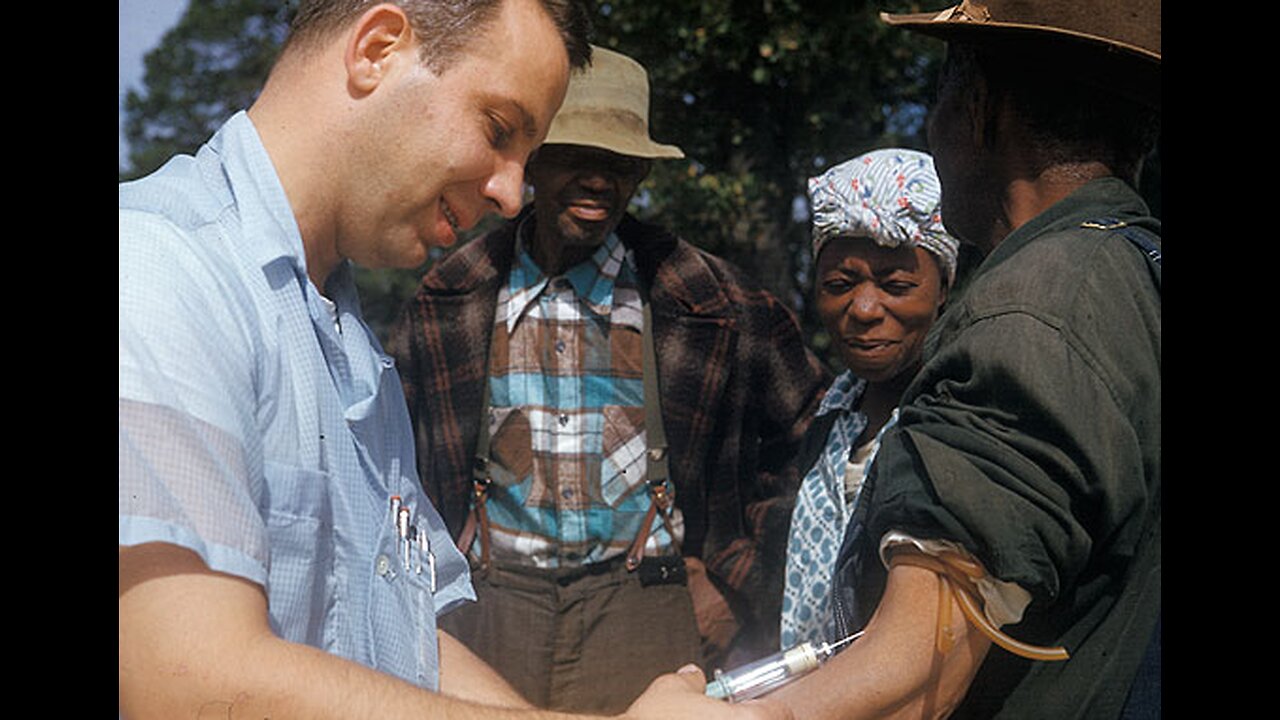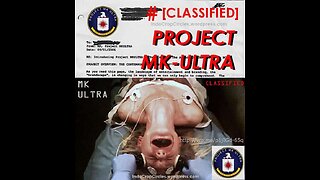Premium Only Content

Tuskegee Syphilis Experiment Revised
Tuskegee Syphilis Experiment explained with the help of photos and documentation. Courtesy, of the National Archives and Records Administration.
Tuskegee Syphilis Study
From Wikipedia, the free encyclopedia
Tuskegee Syphilis Study
Tuskegee-syphilis-study doctor-injecting-subject.jpg
A doctor draws blood from one of the Tuskegee test subjects
Dates 1932–1972
Locations Tuskegee, Alabama
Funding U.S. Public Health Service (PHS)
The Tuskegee Study of Untreated Syphilis in the Negro Male[1][2][3] (informally referred to as the "Tuskegee Syphilis Experiment," the "Tuskegee Syphilis Study," the "Tuskegee Study of Untreated Syphilis in the African American Male," the "U.S. Public Health Service Syphilis Study at Tuskegee," or the "Tuskegee Experiment") was an ethically unjustified study conducted between 1932 and 1972 by the United States Public Health Service (PHS) and the Centers for Disease Control and Prevention (CDC).[4][5] The purpose of this study was to observe the natural history of untreated syphilis. Although the African-American men who participated in the study were told that they were receiving free health care from the federal government of the United States, they were not.[6]
The Public Health Service started the study in 1932 in collaboration with Tuskegee University (then the Tuskegee Institute), a historically black college in Alabama. In the study, investigators enrolled a total of 600 impoverished African-American sharecroppers from Macon County, Alabama.[6] Of these men, 399 had latent syphilis, with a control group of 201 men who were not infected.[5] As an incentive for participation in the study, the men were promised free medical care, but were deceived by the PHS, who never informed subjects of their diagnosis[7][8][9][10] and disguised placebos, ineffective methods, and diagnostic procedures as treatment.[11]
The men were initially told that the "study" was only going to last six months, but it was extended to 40 years.[5] After funding for treatment was lost, the study was continued without informing the men that they would never be treated. None of the infected men were treated with penicillin despite the fact that by 1947, the antibiotic was widely available and had become the standard treatment for syphilis.[12]
The study continued, under numerous Public Health Service supervisors, until 1972, when a leak to the press resulted in its termination on November 16 of that year.[13] The study caused the deaths of 128 of its participants, either directly from syphilis or from related complications.[14]
Background Music "Somebody Ease My Trouble Mind", "Wonderful World", "Change Gonna Come", "Another Saturday Night", "Bring It On Home To Me", by Sam Cooke
-
 15:50
15:50
Diane St Laurent
5 months agoORION Freemasons & Satanists Run the Air Force
6271 -
 LIVE
LIVE
Steven Crowder
2 hours ago🔴 Woke CNN Host's Meltdown Over Trump Slavery Truth Needs to Be Examined
39,664 watching -
 1:00:50
1:00:50
VINCE
3 hours agoThe Pro-Crime Left Is Officially Finding Out | Episode 108 - 08/21/25
128K107 -
 LIVE
LIVE
JuicyJohns
3 hours ago $0.57 earned🟢#1 REBIRTH PLAYER 10.2+ KD🟢
300 watching -
 44:15
44:15
Nikko Ortiz
1 hour agoLive - News, Politics, Podcast And Naaah Im Playin We Chillen
6.3K2 -
 1:56:55
1:56:55
Dear America
3 hours agoLUNATICS Protest DC Crime Being Down 30%?! + FBI Catches A TOP MOST WANTED!!
80.8K39 -
 2:59:39
2:59:39
Wendy Bell Radio
7 hours agoThe Easy Way Or The Hard Way
47.2K54 -
 2:14:46
2:14:46
Matt Kohrs
13 hours agoBuckle Up! Markets Get Tilted || LIVE! Day Trading Futures & Options
37.6K3 -
 LIVE
LIVE
GritsGG
3 hours agoWin Streaking! Most Wins 3390+ 🧠
45 watching -
 LIVE
LIVE
LFA TV
5 hours agoLFA TV ALL DAY STREAM - THURSDAY 8/21/25
4,996 watching